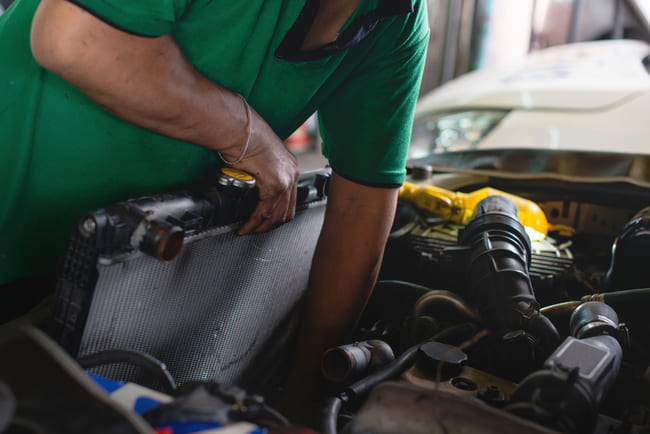- Home
- Shop
-
Engine & Drivetrain
- Radiators, Fans, Cooling Systems & Components
- Exhaust, Headers, Manifolds Mufflers & Components
- Fuel Systems & Components
- Heating, Air Conditioning & Components
- Air Filters, Oil Filters & Intake Systems
- Electronic Control Modules, Ignition & Distributors
- Cranks, Pistons, Oil & Components
- Cams, Timing & Valvetrain
- Clutches, Flywheels & Components
- Switches, Relays, Wiring & Components
- Oxygen Sensors & Components
- Engine & Transmission Assemblies
- Other Engine Parts
-
Brakes, Suspension & Steering
- Brake Discs, Pads & Calipers
- Shocks, Struts & Components
- Control Arms, Thrust Arms & Components
- Wheel Hubs, Bearings, and Components
- Tie Rods, Steering Racks & Components
- Axles, Axles Carrier, Driveshaft & 4WD
- Power Steering Pumps & Components
- Air Suspension Components
- Other Brakes, Suspension & Steering Parts
- ABS Pump & Components
-
Engine & Drivetrain
- Blog
- Catalog
- Contacts US
- Compare: 0
Product
Categories
Select a vehicle to find exact fit parts
Car Radiator: Function, Problems, and Symptoms
The radiator in a car is a low-maintenance and maintenance-free component. Inside the aluminium metal frame is part of a closed water circuit in which cooling water circulates when the engine is running. The cooling water dissipates excess heat and protects the engine from overheating. The temperature of the cooling water is displayed to the driver on the instrument panel.
Common car radiator problems – leaks and overheating
A leaking BMW radiator can cause the engine to overheat. The temperature gauge will then rise into the red. This can eventually lead to serious engine damage. Therefore, if the radiator is broken or leaking, the engine should be switched off until the problem has been rectified and a workshop selected. You can find reliable specialist workshops in your area for the professional inspection and replacement of the radiator at a fixed price online. Besides a leaking radiator, common causes of engine overheating include porous connecting hoses through which cooling water escapes. A faulty water pump can also cause the engine to overheat. If the engine heats up too much and a pool forms under the parked car, cooling water is probably escaping. Another 'suspect' is the V-belt. If the belt is faulty, worn, or under-tensioned, the water pump will not be able to pump enough coolant, causing the car to overheat. A dirty car thermostat or car cooling fan can have similarly serious consequences.
Diagnosis: leaking radiator

Things are a little more problematic if the coolant is dripping directly from a leak in the radiator itself. Taping or sealing the leaking radiator is out of the question simply because of the high pressure the coolant is under. In this case, the only option is to replace the radiator. In this context, a word about car radiator leak sealants. These little helpers may be useful in the short term to get you to the nearest workshop. However, sealants are not a permanent solution as they cannot withstand the pressure in the cooling system in the long term.
What to do when your radiator leaks
In such cases, the car must be towed to a workshop for diagnosis before continuing. A leaking or cracked radiator requires expert knowledge of the cooling system and its peculiarities. The technician knows all the weak points in the cooling circuit and has the necessary expertise and equipment to reliably detect the fault. The workshop knows exactly what to do to repair the problem. The entire cooling system is under severe pressure and an amateurish approach can lead to injury, and engine and environmental damage.
Defective radiator hose
At best, a radiator hose that has broken under mechanical stress, become tired with age or been nibbled by a marten is simply defective. Replacing such a hose is a routine job for a qualified workshop. The coolant is professionally drained, the broken hose is replaced and, after a leak test, the problem is solved. The cost per hose starts at £6, is about £10 per litre and the replacement takes around two hours, depending on the car model. This will include labour and small parts such as hose clamps, and your bill will be at least £100.
Do not continue driving with a leaking radiator
Despite the cost of repairing the cooling system or even replacing the car radiator for your engine, the alternative – engine damage due to a leaking radiator – is even more inconvenient and expensive. Cooling system repairs should always be left in the hands of a specialist workshop. They know how to handle coolant and dispose of it properly. They will also know how to deal with the high pressure in the cooling system and how to bleed it properly. We can only advise against trying to do this yourself. You could end up breaking down on the road or worse.




1984375259.png)
135111072.png)
1235885726.png)
732991495.png)
148086775.png)
There are no comments